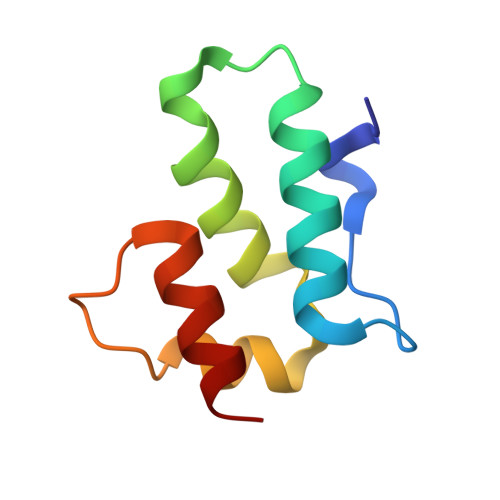Proton-linked dimerization of a retroviral capsid protein initiates capsid assembly
Bailey, G.D., Hyun, J.K., Mitra, A.K., Kingston, R.L.(2009) Structure 17: 737-748
- PubMed: 19446529
- DOI: https://doi.org/10.1016/j.str.2009.03.010
- Primary Citation of Related Structures:
3G0V, 3G1G, 3G1I, 3G21, 3G26, 3G28, 3G29 - PubMed Abstract:
In mature retroviral particles, the capsid protein (CA) forms a shell encasing the viral replication complex. Human immunodeficiency virus (HIV) CA dimerizes in solution, through its C-terminal domain (CTD), and this interaction is important for capsid assembly. In contrast, other retroviral capsid proteins, including that of Rous sarcoma virus (RSV), do not dimerize with measurable affinity. Here we show, using X-ray crystallography and other biophysical methods, that acidification causes RSV CA to dimerize in a fashion analogous to HIV CA, and that this drives capsid assembly in vitro. A pair of aspartic acid residues, located within the CTD dimer interface, explains why dimerization is linked to proton binding. Our results show that despite overarching structural similarities, the intermolecular forces responsible for forming and stabilizing the retroviral capsid differ markedly across retroviral genera. Our data further suggest that proton binding may regulate RSV capsid assembly, or modulate stability of the assembled capsid.
Organizational Affiliation:
School of Biological Sciences, University of Auckland, Auckland, New Zealand.















